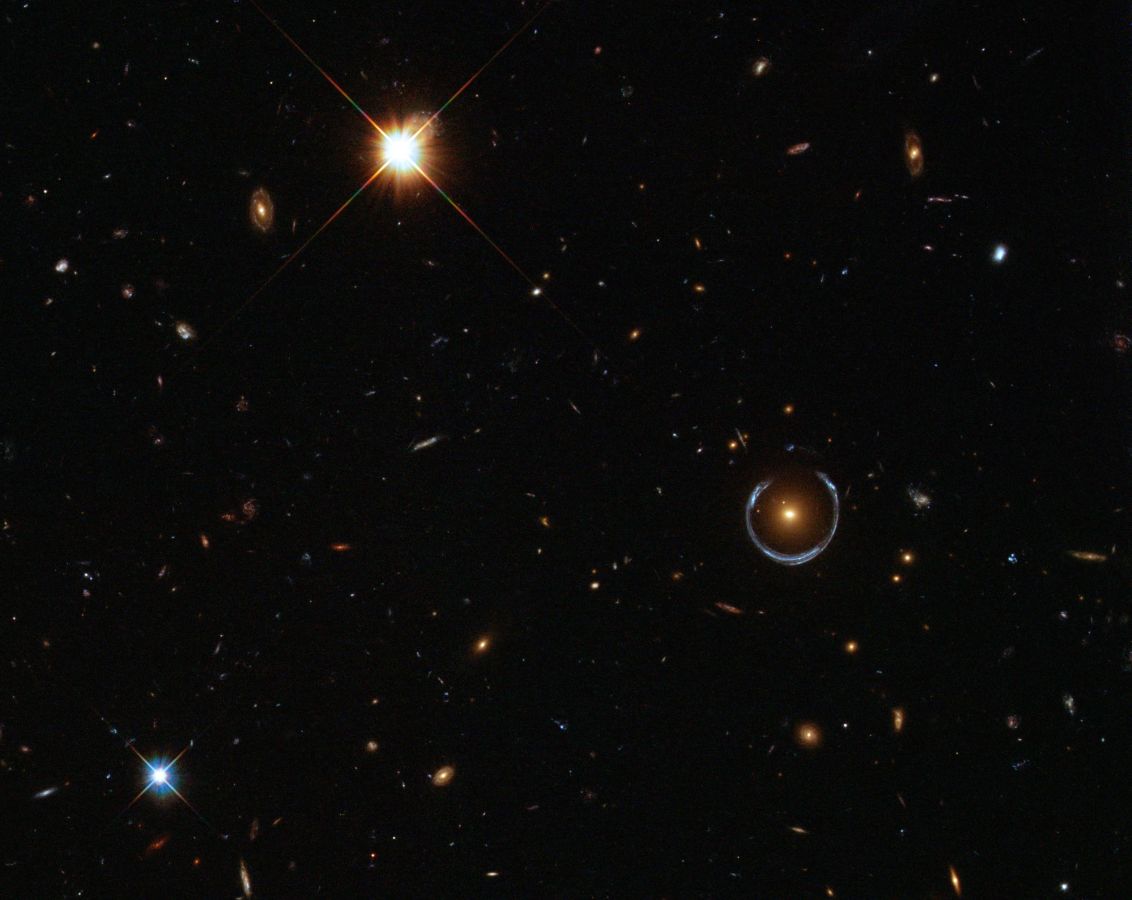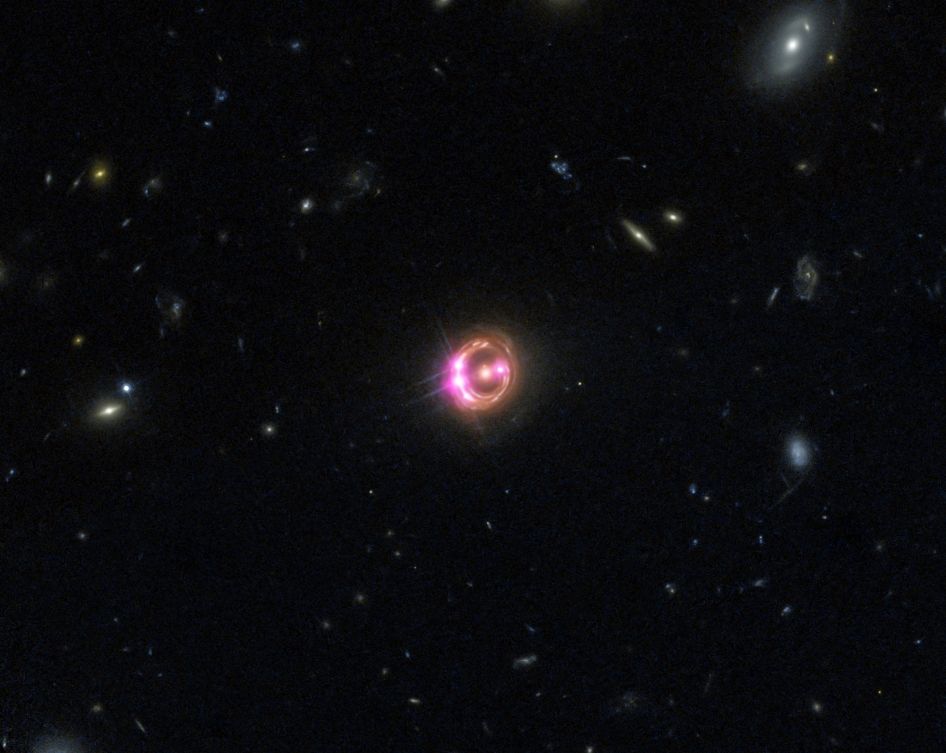LASTRO, eM+
Well known to astronomers, a gravitational lens is an effect formed when light from a very bright astronomical object is distorted by the gravity of a massive entity in the foreground, such as a galaxy, sun, or a black hole that bends the passage of visible light through space. The resulting view may appear to possess multiple mirage images or a ring-like shape, as seen the recent image of a lensed quasar known as 2M1310-1714. This lensing effect is also an ideal demonstration of Einstein’s General Relativity.
For astrophysicists, the detailed study of a distorted source using lensing models is a powerful tool to map the distribution of visible and dark matter in space. This method is used to examine specific galaxies or galaxy groups or clusters. In one scientific application known as “weak gravitational lensing”, only a single image of a source can be seen but is still distorted with respect to its normal “un-lensed” aspect. When used to study multiple effects and galaxies, it is a vital cosmological tool to “probe” otherwise elusive cosmological parameters related to dark energy and dark matter as well as the shape and history of the Universe. EPFL’s LASTRO works on gravitational lensing on all these scales, and much of its research is carried out in the laboratory using it as a primary tool.
Space Time Elastic is an elaboration of the application gravitational lensing to LASTRO’s research. Though created as a playful public interface, the experience closely replicates what an astrophysicist would encounter when generating simulations of this effect in the laboratory. Revealing the contributions of art to science, here the live interaction and spatialization of what is usually a static view is however entirely novel, offering an important augmentation of the scientist’s vision and perception.
NASA/ESA Hubble Space Telescope

RXJ1131-1231 is among the five best lensed quasars discovered to date. The foreground galaxy smears the image of the background quasar into a bright arc (left) and creates a total of four images — three of which can be seen within the arc. Credit: ESA/Hubble, NASA, Suyu et al.
